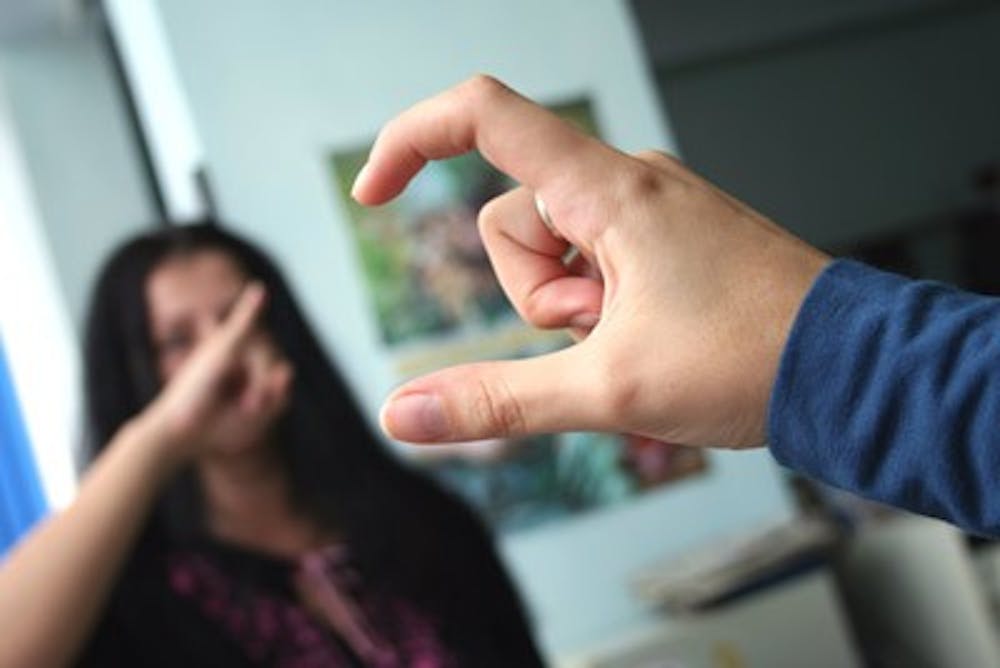Just as there are unique California, New Jersey and Philadelphia accents, there are regional differences in the way people use sign language across regions of the United States.
In the deaf community, it is well known that Philadelphia signing diverges in a number of ways from standard American Sign Language. Jami Fisher, a Penn lecturer in the Department of Linguistics, is working on an ongoing project to study the Philadelphia accent of ASL after receiving a $10,000 Dean’s Grant from the School of Arts and Sciences.
The methodology of the study consisted of interviewing native signers in ASL, all people who grew up in Philadelphia and predominantly still use this variance of ASL. Fisher aimed for the interviews to be conducted in a conversational manner in order to illicit naturalistic speech.
“Something that is very relevant to deaf people is their educational experience because education is integral to language acquisition, in the sense that ASL is passed on and learned by deaf peers and by family members,” Fisher said. Interviewees are asked about their first day in deaf school, because often people lived at the school or spent most of their day there. “We ask if people travel, and behind these questions we’re trying to get at some of the history of the deaf community in Philadelphia,” Fisher added.
Their interviews are then transcribed and annotated for parts of speech and for “glossing the signs,” which means doing English equivalence to mark what the ASL signs are so that linguistic analysis can be done later. Because of the project, Penn undergraduates have had the opportunity to do research in sign language studies, which hasn’t ever been the case at the University before.
“We’re trying to figure out what are these differences in signing that anecdotally people in the United States and Philadelphia in particular have said that marked this as particularly different from any other accent in ASL,” Fisher said.
Regionally, people use different signs for the same word as in spoken English someone might say sub versus hoagie. Fisher said that it is widely noted that in Philadelphia, many words like hospital, park, chocolate, ice cream and strawberry are signed differently.
Fisher grew up signing in the Philadelphia community because both her parents and brother are deaf, so the study has personal significance to her. She was also able to find inspiration for the project in Bill Labov, a recently retired professor of linguistics at Penn who is renowned for documenting the Philadelphia sound and what makes it different from the accents of other parts of the U.S. Fisher was motivated in having a predecessor who studied the Philadelphia accent and wanted to do the same for the deaf community.
Another motivation for the project was the fact that in the deaf community, there is a longstanding fear of the disappearance of ASL and thus, “people who use ASL and are part of deaf culture are afraid that what they know as their language and culture is going to disappear,” Fisher added. “Some of this motivation is a response to language extinction and the need for preservation.”









